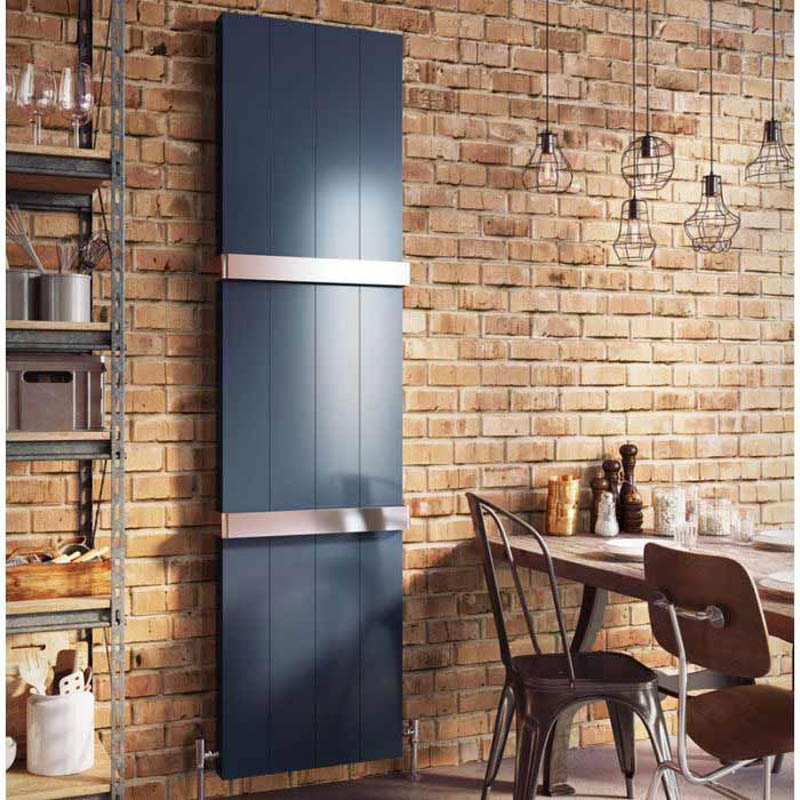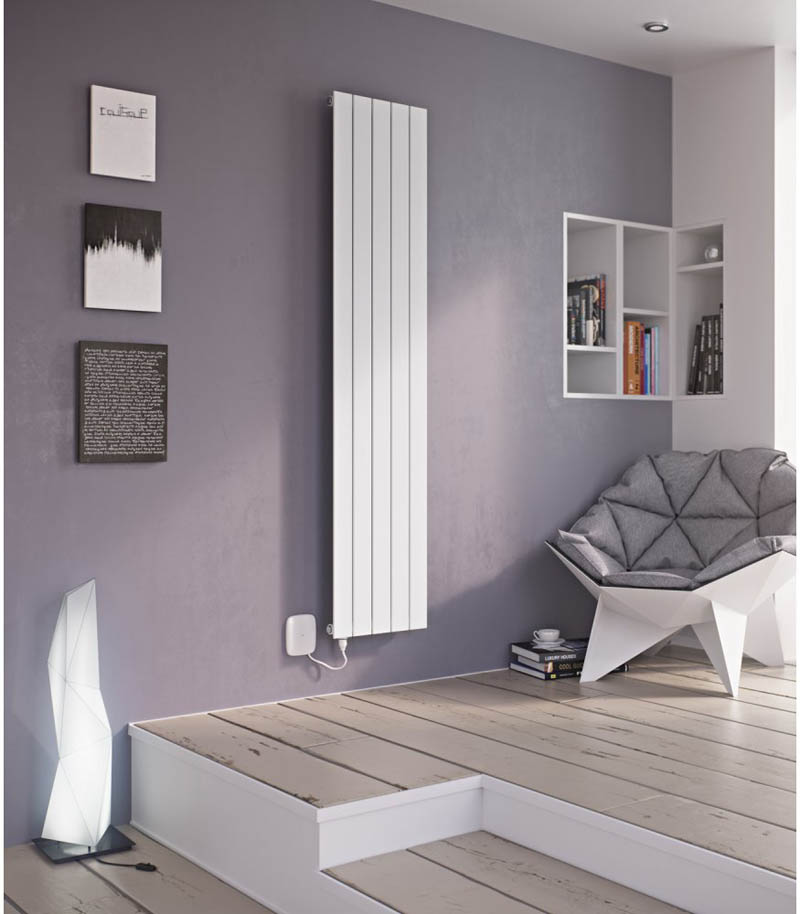Electric vertical radiators are a type of heating system that uses electricity to generate heat. They are designed in a vertical format, making them ideal for spaces with limited floor space or for wall-mounting in areas with high ceilings. They are often seen as a more energy-efficient alternative to traditional heating systems, as they allow for precise temperature control and are typically more efficient at converting electricity into heat.
Benefits of electric vertical radiators include:
- Energy efficiency
- Quick and easy heating
- Space-saving design
- No need for chimneys or flues
- Safe and clean operation
- Silent operation
- Versatile and customizable heating options
- Lower installation costs compared to traditional heating systems.

Why You Should Use Electric Vertical Radiators
- Energy efficiency: Electric vertical radiators are highly efficient at converting electricity into heat.
- Space-saving: They are designed to be mounted on the wall, making them ideal for small or crowded spaces.
- Easy to install: They are simple to install, with no need for a chimney or flue.
- Eco-friendly: They emit no harmful emissions, making them an environmentally friendly heating solution.
- Precise temperature control: Electric vertical radiators offer precise temperature control, allowing you to set the ideal temperature for your space.
- Cost-effective: Running costs are typically lower compared to traditional heating systems.
- Stylish design: Many electric vertical radiators are designed with style in mind, offering a visually appealing heating solution.
Why You Should Use Electric Vertical Radiators with war problem
- No dependence on fuel supply: Unlike traditional heating systems that rely on gas or oil, electric vertical radiators do not rely on a fuel supply, making them less susceptible to fuel shortages or price hikes.
- Safe: In the event of a conflict or natural disaster, electric vertical radiators do not pose a fire hazard and are considered safer.
- Easy to transport: They are lightweight and compact, making them easy to transport if necessary.
- No flammable fuel storage: There is no need to store flammable fuel, reducing the risk of fire.
- No emissions: Electric vertical radiators emit no harmful emissions, making them a safer and more environmentally friendly heating solution in conflict zones.
- Reliable energy source: If a reliable electrical supply is available, electric vertical radiators can provide a reliable heating source.
Types of Electric Vertical Radiators
- Convector Radiators: The most common type of electric vertical radiator, they feature fins to increase surface area and improve heat transfer.
- Panel Radiators: A flat panel radiator that can be easily mounted on a wall, they offer a minimalist and stylish heating solution.
- Towel Radiators: A type of electric vertical radiator that doubles as a towel warmer, they are often found in bathrooms or kitchens.
- Column Radiators: A tall and narrow radiator, ideal for smaller rooms or spaces with limited wall space.
- Designer Radiators: A range of electric vertical radiators that are designed to make a statement, often featuring unique shapes and colors.
- Smart Radiators: A type of electric vertical radiator that can be controlled and programmed via a smartphone or tablet.
- Infrared Radiators: An electric vertical radiator that uses infrared technology to provide heat, they are often considered more efficient and eco-friendly.

Electric Vertical Radiators versus Central Heating:
- Cost: Electric vertical radiators tend to be cheaper to install, but ongoing running costs can be higher compared to central heating systems.
- Efficiency: Central heating systems are often more efficient at heating large spaces, while electric vertical radiators are better suited for heating smaller areas.
- Maintenance: Electric vertical radiators require less maintenance compared to central heating systems.
- Flexibility: Electric vertical radiators offer more flexibility, as they can be easily moved or installed in different rooms as needed.
- Design: Electric vertical radiators offer a range of stylish design options, while central heating systems are often hidden away and not seen as a design feature.
- Control: With electric vertical radiators, you have precise temperature control in each room. With central heating, the temperature is set for the entire home.

